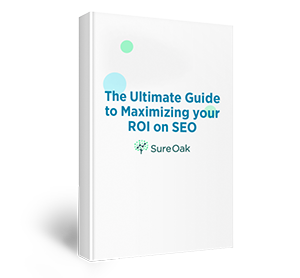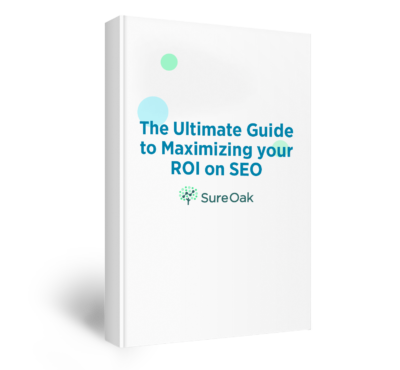
Driving traffic to your website is a crucial step in growing your business, but doing so is easier said than done. To boost the ranking of your website on search engines, you not only have to attract users to your site, but you also need to convince them to stick around. To improve the performance and visibility of websites on search engines, you can use a strategy called internal linking.
In this article, we’ll explore what internal linking is, how to leverage internal linking for SEO, and how to craft an ongoing internal linking strategy that boosts your website’s ranking and performance.
What Is Internal Linking and Why Are Internal Links Important for SEO?
Internal links are clickable links within your website content that point you to other pages on your site. It’s a form of on-page optimization that helps users and search engines make sense of your site.
When someone lands on your site, they won’t always find what they’re looking for on the first page. If this happens, you need to lead them to the right content quickly or risk losing them. Internal links guide your website visitors to relevant information.
Search engines reward sites that are relevant (and therefore useful) to users. In order to rank your content, they first need to know how to find it. Internal links help search engine crawlers discover and organize your pages. By linking similar content, you begin to establish a hierarchy and structure for your website, which in turn enhances the crawlability and indexability of your site. And, you’re improving the user experience and boosting engagement in the process.
Crafting a Strategic Internal Linking Strategy
As with all SEO strategies, there are right ways and wrong ways to leverage internal links. Too many internal links will negatively affect your site, just as too few will make it challenging for users and search engines to find content.
Because of this, it’s important to create an internal linking strategy. Here are some key aspects to consider as you develop your plan.
Organic Search Rankings
To have pages appear higher in organic search rankings, consider including the following in your linking strategy:
- Keyword research: Identify the keywords that are relevant to your niche, audience, and goals, and use them as anchors for your internal links. This helps you create page authority — the value or credibility a search engine assigns to a web page — while also telling search engines what these pages are about.
- High-quality content: Don’t link to filler pages on your site, but rather well-written, informative, and useful content that provides value and answers the questions of your users. Quality content generates more traffic, engagement, and backlinks to your pages, which can increase their link authority and rankings.
- Link placement: Relevancy is critical. Internal links should be placed in logical spots throughout your content and relevant to the page at hand, as well as the page you are linking to.
Indexing and Crawling of Web Pages
Another important aspect of an internal linking strategy is to make it easier for search engines to discover, analyze, and store information about each page of your site and the connections between them.
To facilitate a search engine’s process of indexing and crawling your web pages, you can:
- Create sitemaps: Make a user-facing sitemap as well as an XML sitemap that lists all the pages of your website.
- Optimize your navigation: Create a navigation architecture that is clear, consistent, and user-friendly for both users and search engines. Keep it simple.
- Make links accessible: Your internal links help you reduce the number of clicks required for users and search engines to reach any page on your website. Ideally, every page should be accessible within three clicks from the homepage or any other entry point.
User Experience and Engagement

Optimized internal links increase engagement on your website since visitors will actively click on them to navigate to the information they’re most interested in. In addition to adding relevant links for users to click on, there are three aspects of that you should consider:
- User intent: Understand the intent behind the queries and actions of your users, and provide them with relevant and helpful internal links that match their needs and expectations.
- Context: Provide context and clarity for your internal links so users know what to expect when they click on them.
- Variety: Offer a variety of internal links that cater to different types of users and scenarios, such as informational, navigational, and transactional.
As you can see, internal linking is a complex process that requires a strategic approach, research, and, oftentimes, assistance from SEO experts.
Best Practices for Internal Linking Optimization
If link building isn’t just about stuffing your pages with links, how do the professionals do it? Let’s go over some of the industry’s best practices.
Using Descriptive Anchor Texts
Anchor text refers to the word or phrase to which you attach your link. It plays a crucial role in internal linking, as it provides context for both users and search engines about the content and relevance of the linked page. Use descriptive anchor text that includes the keyword or topic of the linked page, and keep it concise and clear.
For example, instead of linking generic terms like “Click here” or “Read more,” be specific. “How to improve your Google Local ranking” and “Create an effective SEO strategy” both tell the reader (and search engine) exactly what’s on the other end of the click.
Using descriptive anchor text reduces the likelihood of the visitor “bouncing,” or leaving your site after visiting only one page. It captivates the attention of the reader by directing them to valuable, relevant information, encouraging them to learn more about a specific phrase or issue. If they stay on your website and keep reading, they’re likely finding what they came for.
Linking to Relevant and Related Content
Be sure you’re linking to relevant content that aligns with the anchor text you use. For example, the anchor text “improve your Google ranking” should send your visitor directly to content that explains how to improve one’s Google ranking.
And, to provide value to your visitors, link pages that are closely related to the topic and keywords of your current page. If, say, you have a page that teaches readers how to write a blog post, you can keep them engaged by linking to your other pages covering keyword research, blog promotion, and how to craft blog titles.
Optimizing the Placement and Context of Internal Links
Place your internal links strategically where they are visible and natural for users and search engines, and provide context and clarity for them. This way, they make sense to the reader and won’t seem out of place.
Maintaining a Successful Internal Linking Strategy
A successful internal linking strategy requires regular maintenance and updates based on trends, technological changes, and user data. Maintaining your linking strategy includes conducting regular internal link audits and making necessary changes or adjustments to your internal links. Here are some steps to follow.
Regular Internal Link Audits
Carve some time to review and analyze your internal links at regular intervals. Use this audit to identify any issues or opportunities for improvement. You’ll be able to gauge whether your internal links are working properly, remain relevant, and are still effective for your SEO goals. Try to conduct an internal link audit at least once every six months, or whenever you make significant changes to your website.
After conducting a link audit, you’ll likely find that you need to fix broken links and remove unnecessary ones.
Broken Internal Links
Broken internal links lead to pages that no longer exist or are inaccessible for some reason, such as 404 errors, server errors, or redirects. They can create a negative user experience and signal to search engines that your website is poorly maintained or unreliable.
Make sure to identify and fix any broken internal links on your website using tools like Google Search Console. You should either remove them or replace them with working links to relevant pages.
Removing Unnecessary or Redundant Internal Links
Not all internal links add value for your users or search engines. Maybe you’ve used the same link multiple times on one page, pointed to off-topic content, or anchored a link to generic or vague text. This can create a cluttered, confusing user experience and dilute the link authority of your pages.
Regularly locate and remove any unnecessary or redundant internal links on your website. As with broken links, you can either remove them or replace them with more relevant and diverse links to valuable pages.
Knowing how to build internal links for SEO purposes is complex and dynamic, and it requires a strategic approach and constant optimization. It can be challenging and time-consuming to create and maintain an effective internal linking strategy for your website on your own. Luckily, hiring the help of a professional SEO agency like Sure Oak can help!




